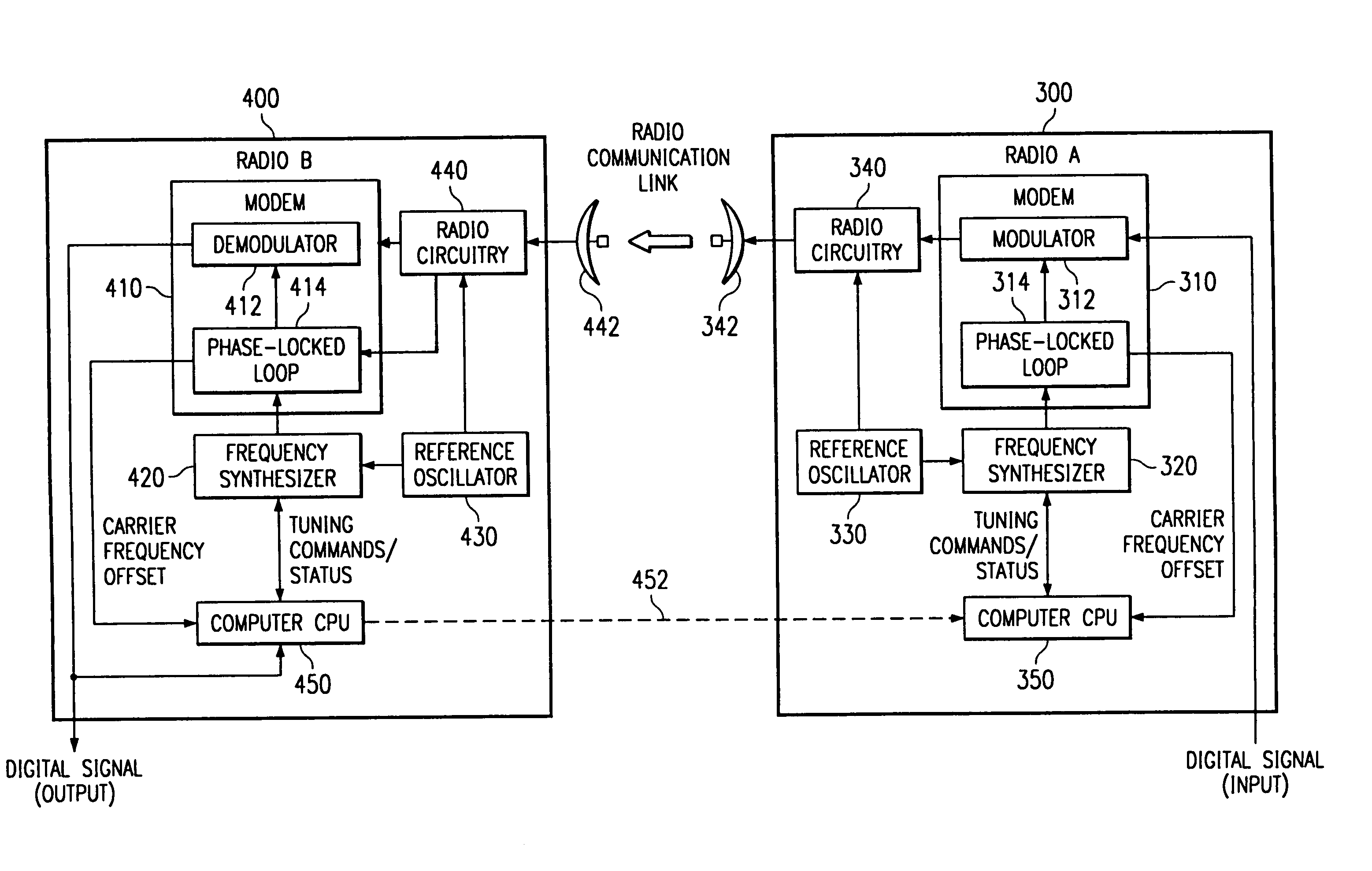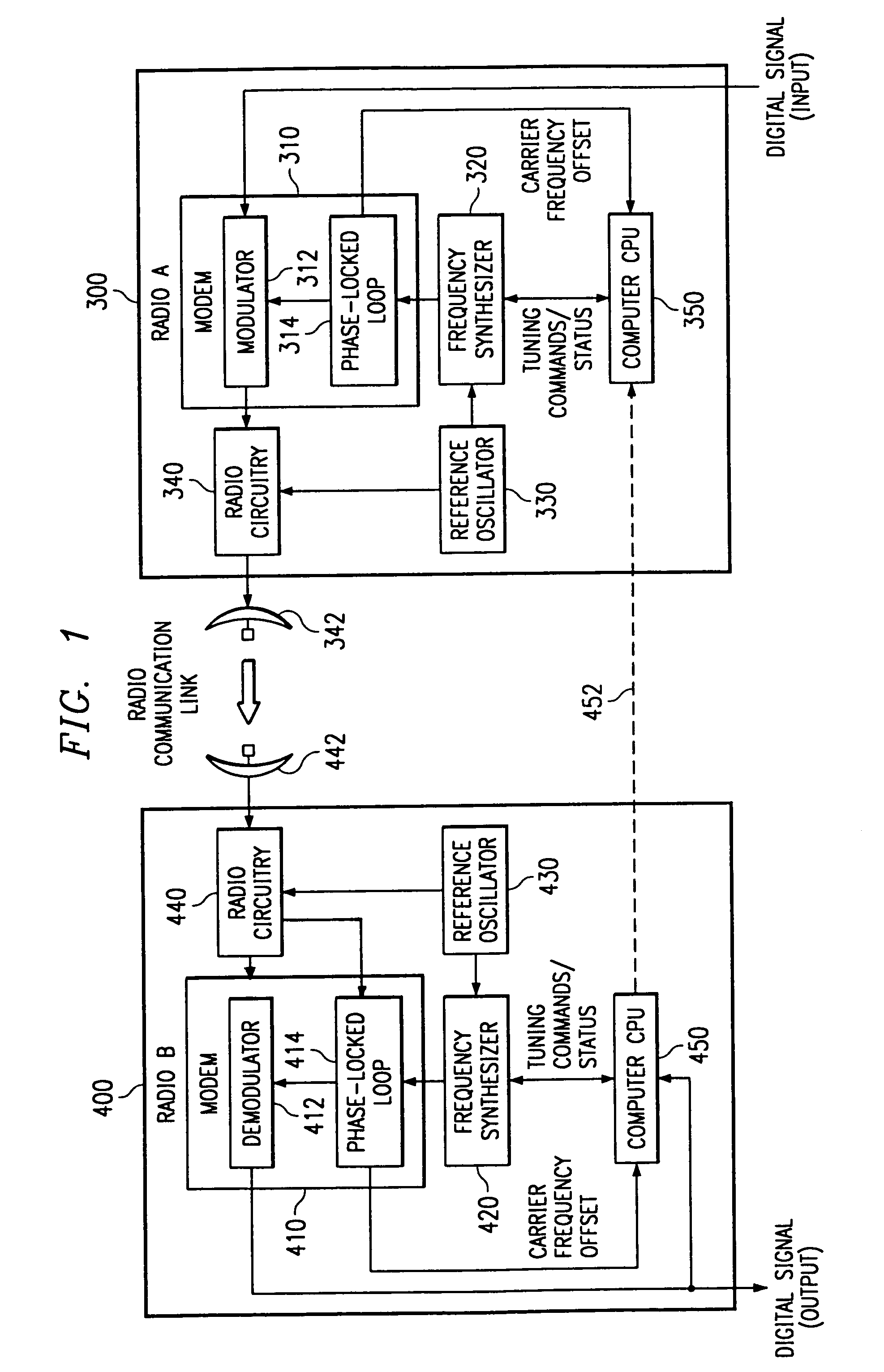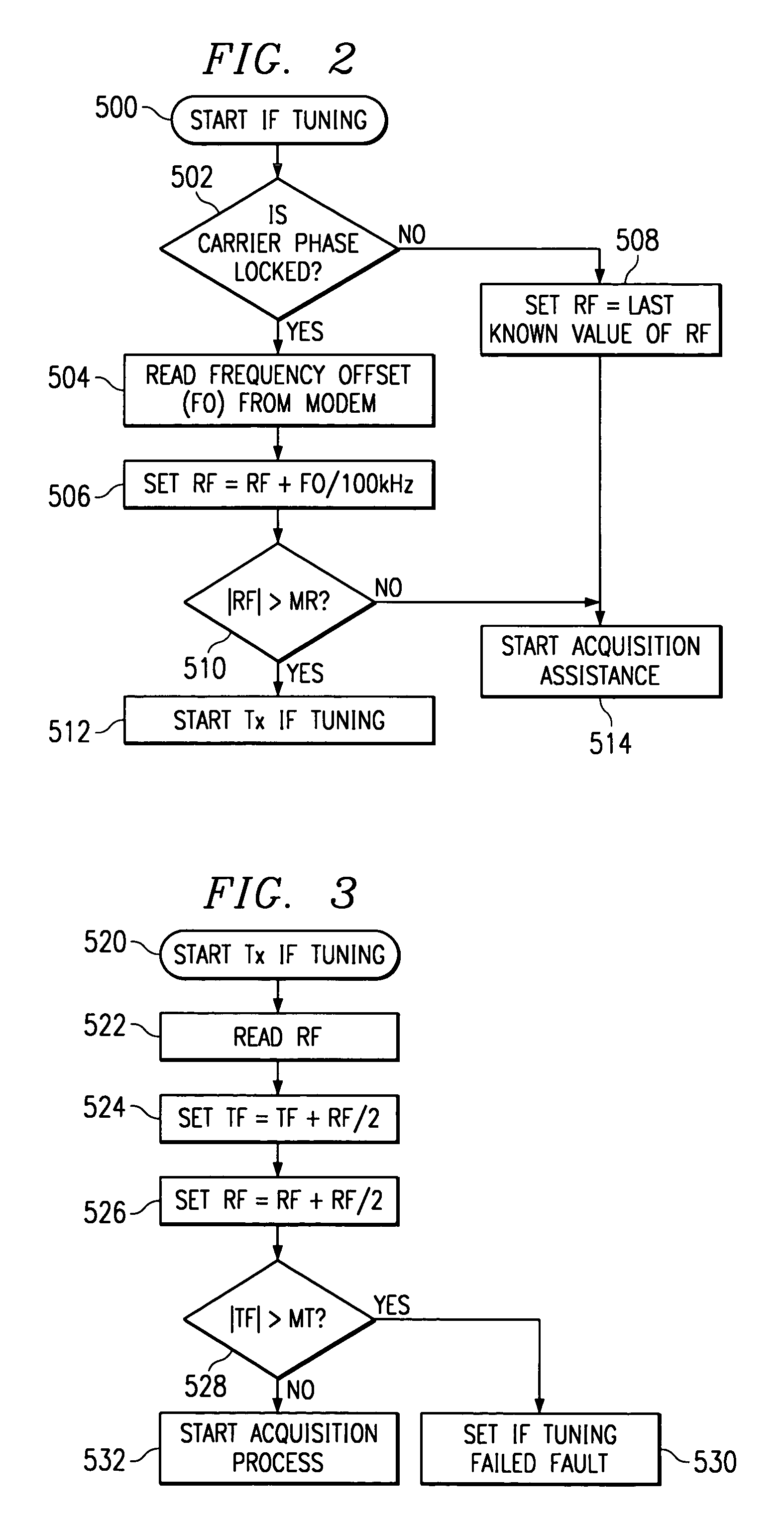Carrier frequency compensation system and method
a carrier frequency compensation and carrier frequency technology, applied in the direction of resonant circuits using central processing units, pulse techniques, electrial characteristics varying frequency control, etc., can solve the problem that the frequency of reference oscillators tends to slowly drift over time, the modem cannot detect the digital data signal contained in the modulated carrier signal, and the operating range is still limited by certain design criteria. problem, to achieve the effect of minimizing communications outages
- Summary
- Abstract
- Description
- Claims
- Application Information
AI Technical Summary
Benefits of technology
Problems solved by technology
Method used
Image
Examples
Embodiment Construction
[0038]FIG. 1 is a block diagram of a point-to-point microwave radio system according to a preferred embodiment of the invention for transmitting information in the form of a data signal from a transmitter site A to a receiver site B. Typically the data signal is in the form of a digital data stream. The system preferably works in the 38 GHz range but is equally applicable to other frequencies, modes, and media of data transmission wherein receiver and transmitter facilities use distinct clock or frequency references which may drift with respect to each other, degrading or entirely inhibiting link performance. For simplicity of explanation, the embodiment of FIG. 1 is shown as a unidirectional system for the transmission of data from transmitter site A to receiver site B, although, as will be detailed later, the invention is equally applicable to bidirectional, full duplex radio links and similar media having the aforementioned requirement to maintain a precise carrier frequency betw...
PUM
 Login to View More
Login to View More Abstract
Description
Claims
Application Information
 Login to View More
Login to View More - R&D
- Intellectual Property
- Life Sciences
- Materials
- Tech Scout
- Unparalleled Data Quality
- Higher Quality Content
- 60% Fewer Hallucinations
Browse by: Latest US Patents, China's latest patents, Technical Efficacy Thesaurus, Application Domain, Technology Topic, Popular Technical Reports.
© 2025 PatSnap. All rights reserved.Legal|Privacy policy|Modern Slavery Act Transparency Statement|Sitemap|About US| Contact US: help@patsnap.com



